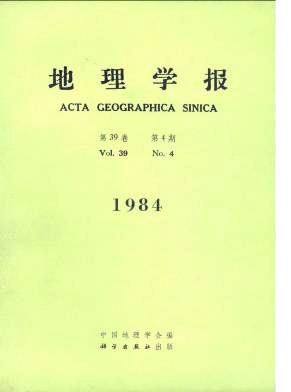Chou Li-san
The Xinjiang Uygur Autonomous Regionoccupies about one sixth of the total land area of China. There are three mountain systems, Tienshan, Altay and Kunlun, Lying alternatively with three large basins, Tarim, Turpan and Junggar. numerous glaciars develop in the higher mountains, while vast expanse of gobi and desert prevails in the basins. The climate is arid with a scarcity of population, yet, due to its complicated geological structure and land types with abundantnatural resources, this region possesses favourable conditions not only to develop agriculture, forestry, and animal husbandry, but also industry and mining.Around 1956, the Chinese Academy of Sciences conducted successively a series of scientific investigations on border areas, the Xinjing integated Survey was one of them. Dr. Chu Ko-chen (Zhou Ke-zhen), being the Vice-President of the Chinese Academy of Sciences, was concurrently the head of Commission for Integrated Survey. With all his heart and might Dr. Chu took part in this scientific research work of great strategic significance. It was under his gidance that the integrated survey in Xinjiang was making excellent progress from beginning to end. He pointed out that investigation teams should take agriculture, forestry and water conservancy as the key links and investigations of water and land resources, climatic resources, biological resources and rational distribution and allocation of production as the main tasks.During our four-year work of the investigatied survey, Dr. Chu often worked together with us. In fall of 1958, regardless of his old age of about seventy, he made an expedition to Xinjing in person. At first he inspected Urumqi, then arrived at Yili prefecture via Shi-hezi and Jinghe in the westmost part of Xinjing, and finally he attended a summing-up meeting convened by the investigation team in the Tarim Basin, on his visit to Aksu, kashi, Shache and Yecheng, he made an on-the-spot investigation on farms and industries so as to obtain firsthand information. Not only did he acquaint himself with production conditions, but also paid great attention to the problems existing in the economic development. During the period of 1959?960. Whenever we started to summarize our comprehensive work or to compile the monograph on the integrated survey in Xinjing, Dr. Chu would give us advices personally. The instructions offered by him played an important role in defining the direction and task for the Xinjiang Integrated Survey.Dr. Chou had been always concerned with exploiration and utilization of natural resources in the Xinjiang region, on the problem of reclamation of arid region, for instance, he emphasized several times his viewpoint of "reclamation according to available water", that is to say, the amount of farmland to be opened up depends on the amount of available irrigation water. He also stressed that attention should be paid to water and soil conservation, that precaution must be taken against salinazation and desertification, and that care must be taken of the combination between agriculture, forestry and animal husbandry.
